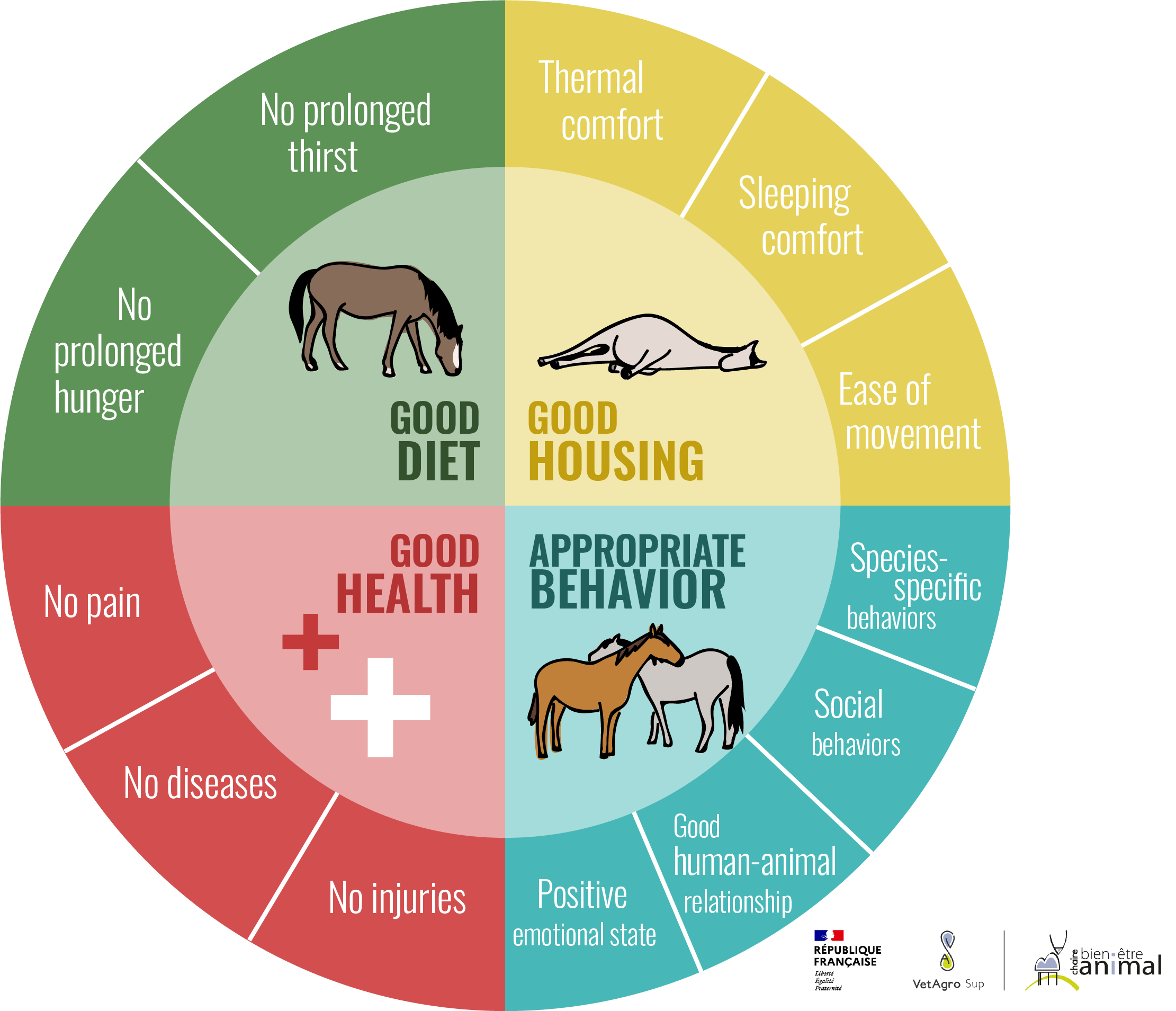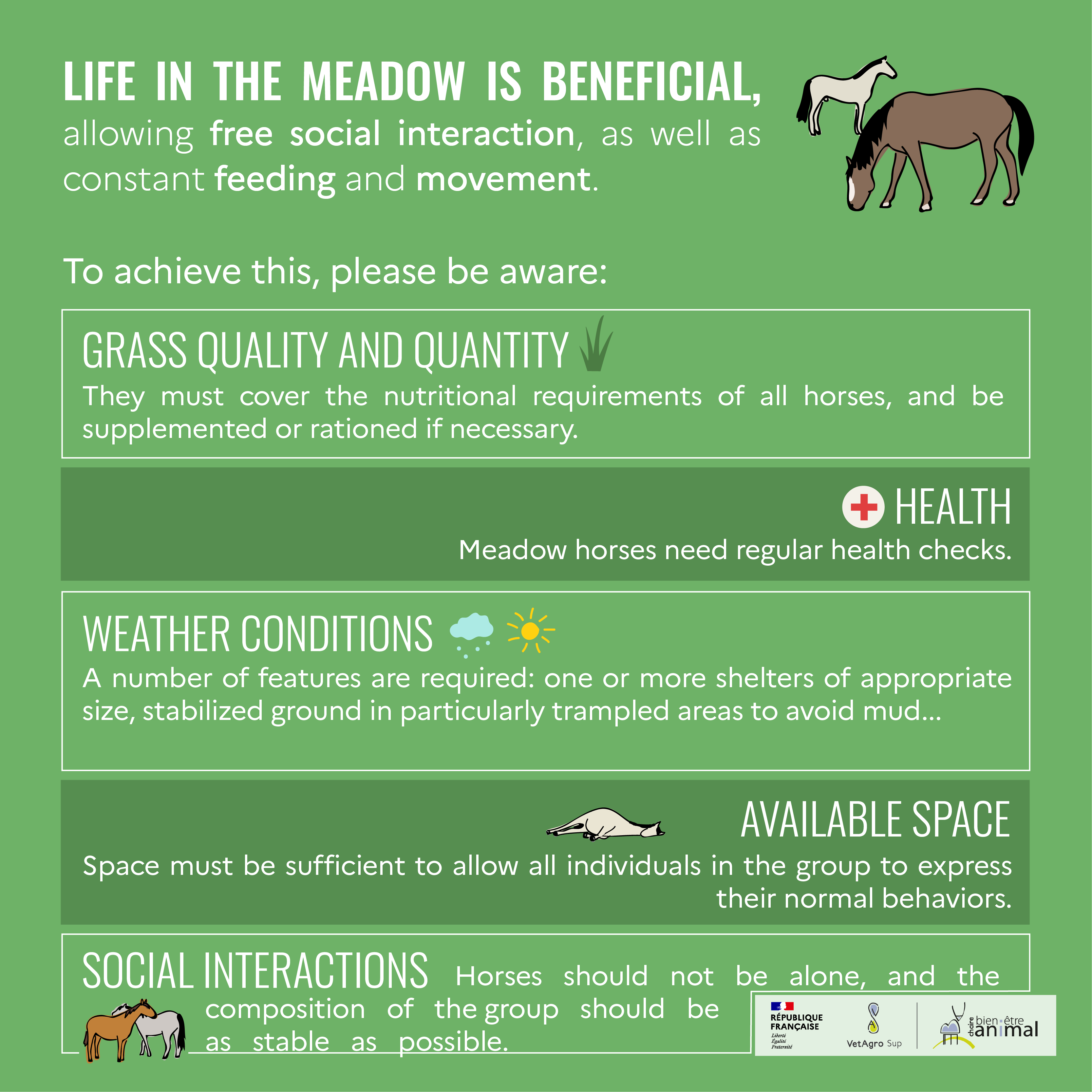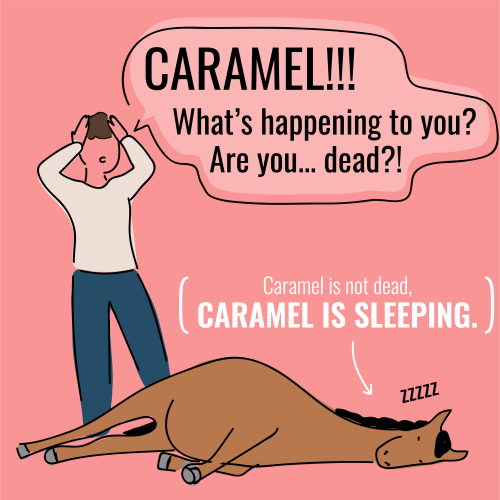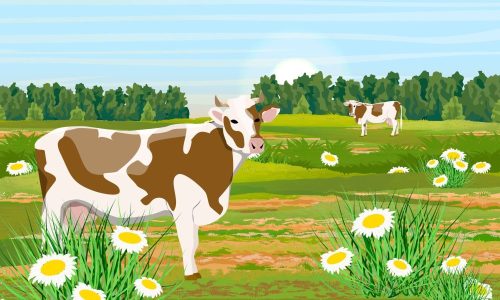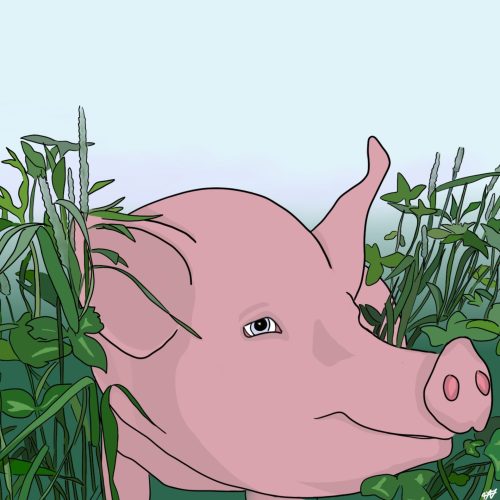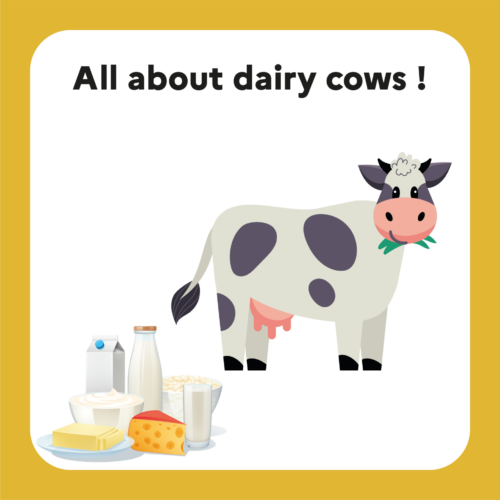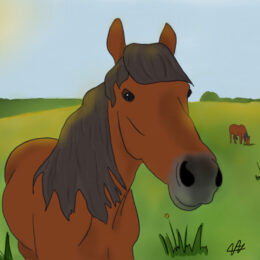

TRUE...
Under certain conditions! By giving horses the opportunity to express more of their natural behaviors, living in a herd in the pasture enhances their welfare, but equine owners must follow certain principles.
Keep in mind
Meadow life fosters horses’ welfare if it is organized in such a way that they can:
- Eat frequently and have clean water available throughout the day
- Move freely
- Be protected in all weather conditions
- Be healthy
- Live in a group, which needs to be stable to create strong, lasting bonds
Herd life in the meadow, compared with permanent life in the stall, improves the emotional state of horses[1]. For example, horses with meadow access proved to be more optimistic than horses housed solely in individual stalls: i.e., they judged ambiguous situations more positively[2]. This suggests that a meadow horse is potentially mentally healthier, as it can express a wider range of behaviors.
So, what does the ideal meadow look like from a horse’s point of view?

Did you know?
The Equidae family includes donkeys, zebras and horses. A pony is a small horse, so pony and horse are one and the same!
While they share many similarities, some of their needs and biological characteristics differ. For example, donkeys are territorial, whereas horses are not.
The horse’s basic needs
Good health and physical comfort are prerequisites for animal welfare, but they are not the only criteria: animals must be in a positive emotional state and be able to express the behaviors specific to their species.
Horses’ main activity is feeding, to which they devote an average of 60% of their time in natural conditions, i.e. around 15 hours a day. Strictly herbivores, horses are constantly on the move, eating grass as well as branches, fruit, bark and roots.
Their second most common activity on a daily scale is resting, which occupies 6 non-consecutive hours per day. This is followed by moving around, observation of the environment, maintenance activities (i.e. drinking, scratching, rolling) and social interactions[3]. However, if the latter behaviors are shorter and less frequent, it does not follow that they are any less important!
Eat, and move!
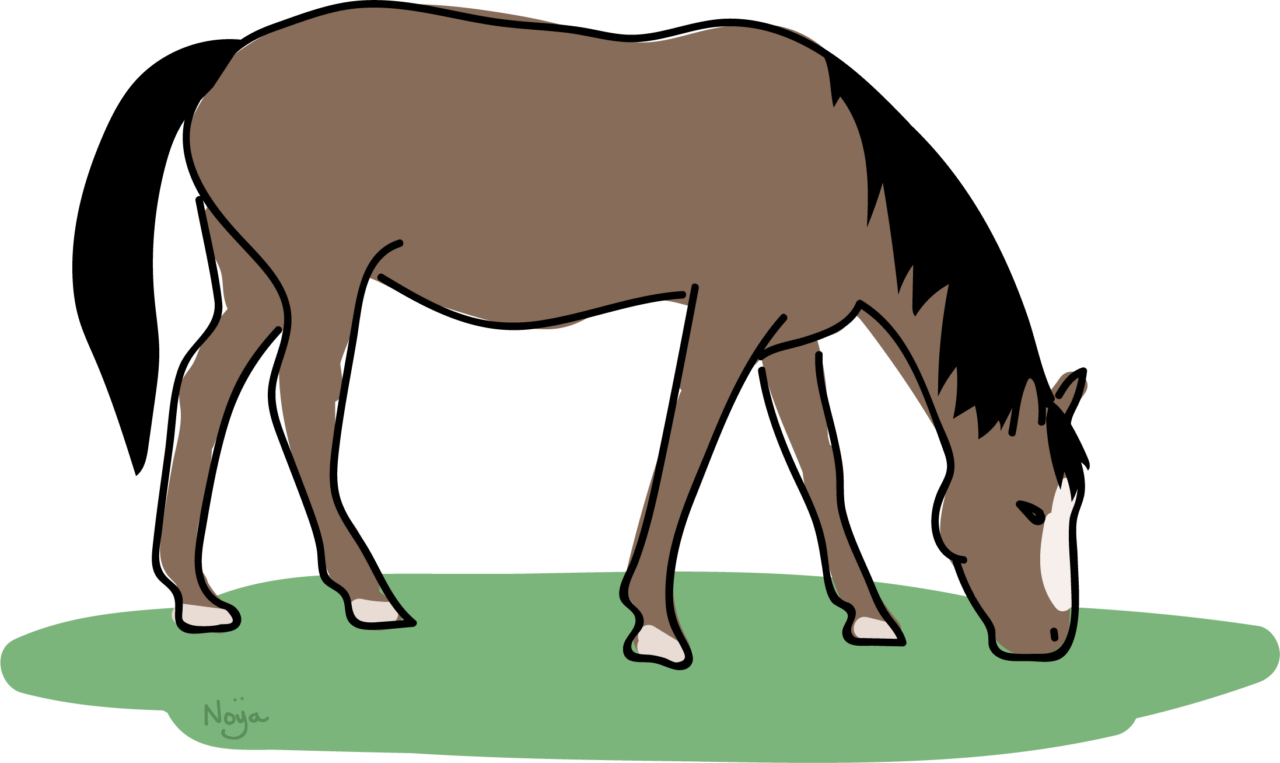
By allowing horses to move around as they please and to feed throughout the day, meadows offer the opportunity to express behavior that is close to a horse’s natural state.
For horses, eating and moving go hand in hand: their diet is forage-based, which means that the time they spend grazing throughout the day (and night!) is synonymous with movement. Add to this the time they spend travelling to and from various points of interest (water trough, shelter, hay rack, etc.), all of which should probably not be concentrated in one place in the meadow.
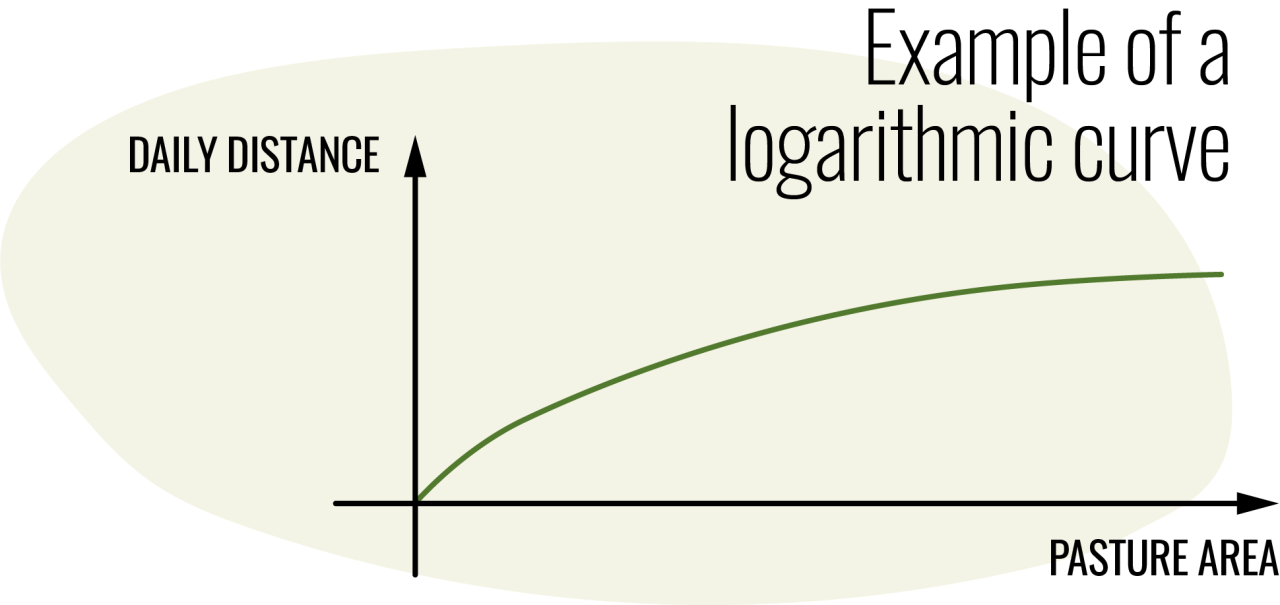
The distance covered daily increases (logarithmically) with the surface area of the pasture: for example, the distance covered by a horse in a group of four is about 4.7 km per day in a 0.8 ha plot. This rises to 6.1 km for a 4 ha plot[4]. Due to the proximity of the various resources, the daily distance covered by horses in domestic conditions is less than in natural conditions (15-18 km on average)[5].
Movement is vital to a horse’s health in many ways. In particular, it stimulates blood and lymph circulation in the limbs. Immobility also alters digestion which, like feeding, is continuous.
To cover its daily requirements, an average grass-fed horse eats about 60 kg of grass per day. It is therefore important to ensure that grass is available in sufficient quantity and quality throughout the year.
When it is insufficient, hay must be provided, with or without supplements. In addition to providing the required energy for overall metabolism, feed must also satisfy a horse’s need to chew. As well as contributing to horses’ psychological welfare, chewing stimulates the production of saliva, which is essential for creating physiological conditions favorable to digestion. The amount of saliva produced depends on the dry matter content of the feed and the required chewing time: concentrated feeds (pellets, flakes), for example, require less chewing and saliva than hay.
On the other hand, the continuous and unlimited consumption of excessively rich grass can alter a horse’s state of health, sometimes irreversibly. It is therefore essential to monitor overweight by evaluating horses’ body condition score: contrary to popular belief, a horse that is too fat should be just as much concern as one that is too thin!

Did you know?
Outdoor spaces for horses are generally meadows or paddocks.
Although not clearly defined, a paddock is a smaller area than the meadow. For horses living in a stall, it provides an outdoor space where it can move around freely. Paddocks are often individual, but when size allows it, they can accommodate several horses. Meadows also have a forage function: they provide all or part of animal feed.
But while the motivation to feed generally takes precedence over other needs, social context is crucial in the expression of this voluntary movement: when given the choice, horses are more inclined to stay outdoors for long periods in the presence of other horses[6].
Interacting with other equids
Horses live in herds. By allowing free interaction with other animals and the development of social bonds, group housing has a positive effect on their physiology and behavior, positively affecting their state of welfare[7]. The meadow can fulfill this need for sociability, as it offers sufficient space to put several horses together. It is even essential that horses are not alone and are allowed to interact with other equids.
In their natural state, horses know two types of social structure: family groups (also called families or harems) and groups of single males[8].
The family is based on a core group of mares, who develop strong, lasting social bonds, and a stallion. Mares and stallions also share strong social bonds[9]. Their offspring, both males and females, leave their group of origin when they reach sexual maturity: young males join a group of single stallions while waiting to acquire mares from other families and form their own.
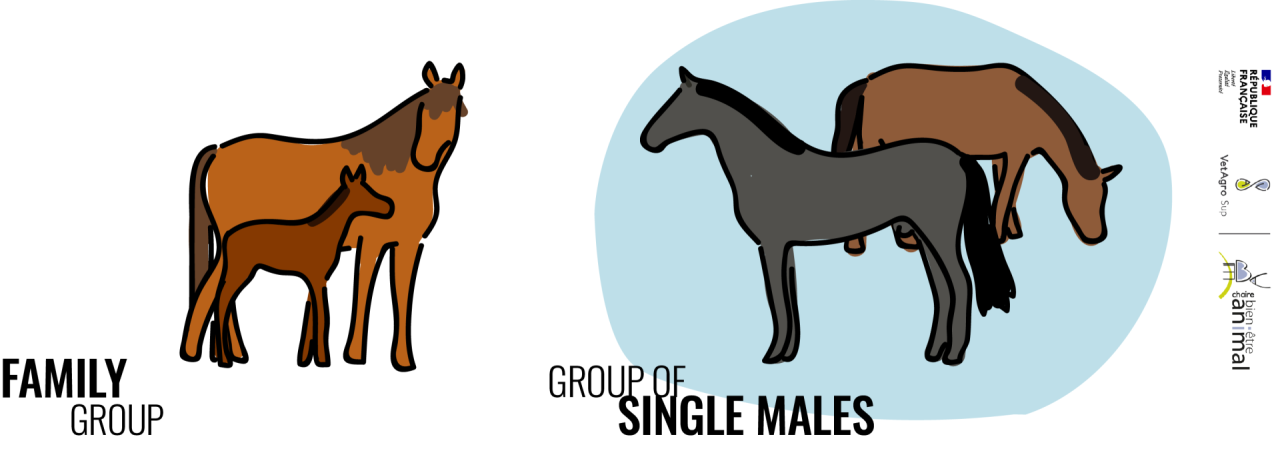
In the latter part of his life, a stallion removed from his group may join a group of single stallions, or opt for a solitary life[10].
For some equine owners, being in a group is a source of concern, as they fear that horses will hurt each other. However, horses organize themselves within groups according to three main principles: social cohesion, dominance hierarchy and leadership.
- Social cohesion is reflected in spatial proximity, non-frequent aggressive interactions, very frequent affiliative interactions (see box) and a high level of mutual tolerance. These relationships remain stable over the years[11].
- Within the group, horses are organized hierarchically, based on dominance A horse is dominant over another if it has priority access to a resource (shade, water trough, rack), can attack without being attacked, and if its presence induces avoidance without apparent aggression. In this way, dominance relationships enable conflicts over access to a limited resource to be resolved without fighting[12].
- Leadership is the ability of an animal to influence the movement and activities of its group and to be followed quickly[13]. In horses, leadership is not concentrated on a single individual in the group: every member of the group is likely to initiate a collective move, but some individuals are followed more quickly than others.A leader is not necessarily dominant. These two notions do not necessarily belong to the same individuals and do not fulfill the same functions.
All these mechanisms help to organize the group’s social life and limit conflict. They take time to set up, from several days to several weeks[14] depending on the case, and depend directly on the composition of the group: the arrival of a new individual or, conversely, the definitive departure of a group member immediately renders all rules obsolete, and organization must be redefined.
Consequently, group stability is essential in order to limit agonistic (conflict-related) behavior and to foster cohesion.

Did you know?
The most widely expressed sign of affinity is also the most discreet: two horses grazing in close proximity to each other. Calmness within a group should not be interpreted as indifference, but as the consequence of good social organization.
In addition, horses are more tolerant of contact with other equids with whom they share a strong affinity: together they will engage in activities such as swishing away flies or mutual grooming.
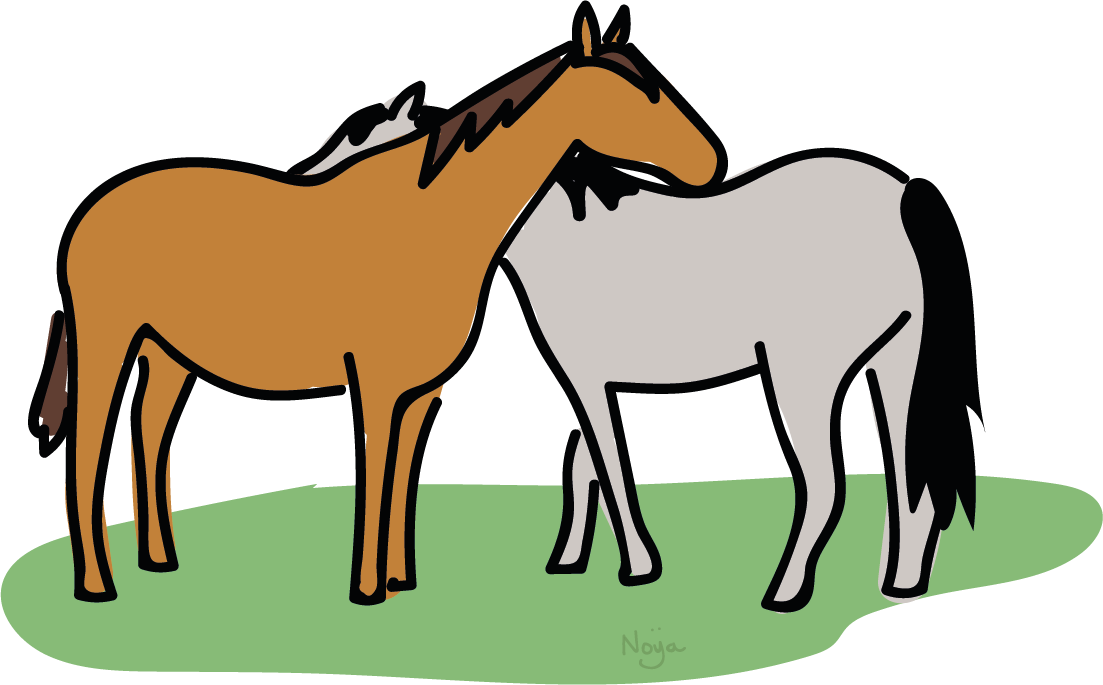
Weather and rest
Horses are not as sensitive to weather conditions as humans are. They are capable of adapting their behavior to their environment, and have a number of natural assets, starting with their hair coat, the density of which changes with the seasons. The presence of natural and/or artificial shelters large enough for the whole group is, however, necessary to guarantee effective adaptation and rest.
It’s not uncommon to see owners complaining about their horses standing still in the rain, when there’s plenty of shelter just a few yards away. Horses don’t necessarily seek shelter in cold or rainy weather. However, when the temperature rises above +20°C and insect pressure increases[15], the number of horses resorting to artificial shelters can double[16].
Although horses tend to prefer artificial shelter[17], trees and hedges, when sufficiently developed, can also contribute to improving their thermal comfort in the pasture, both in summer and in winter.
A horse’s thermal comfort zone extends from around 5°C to 25°C[18]Above 25°C, horses will adapt their behavior to eliminate excess heat and avoid producing it: grazing preferably at the coolest hours, resting in the shade, sweating, drinking more than the average daily consumption of 40 liters of water.
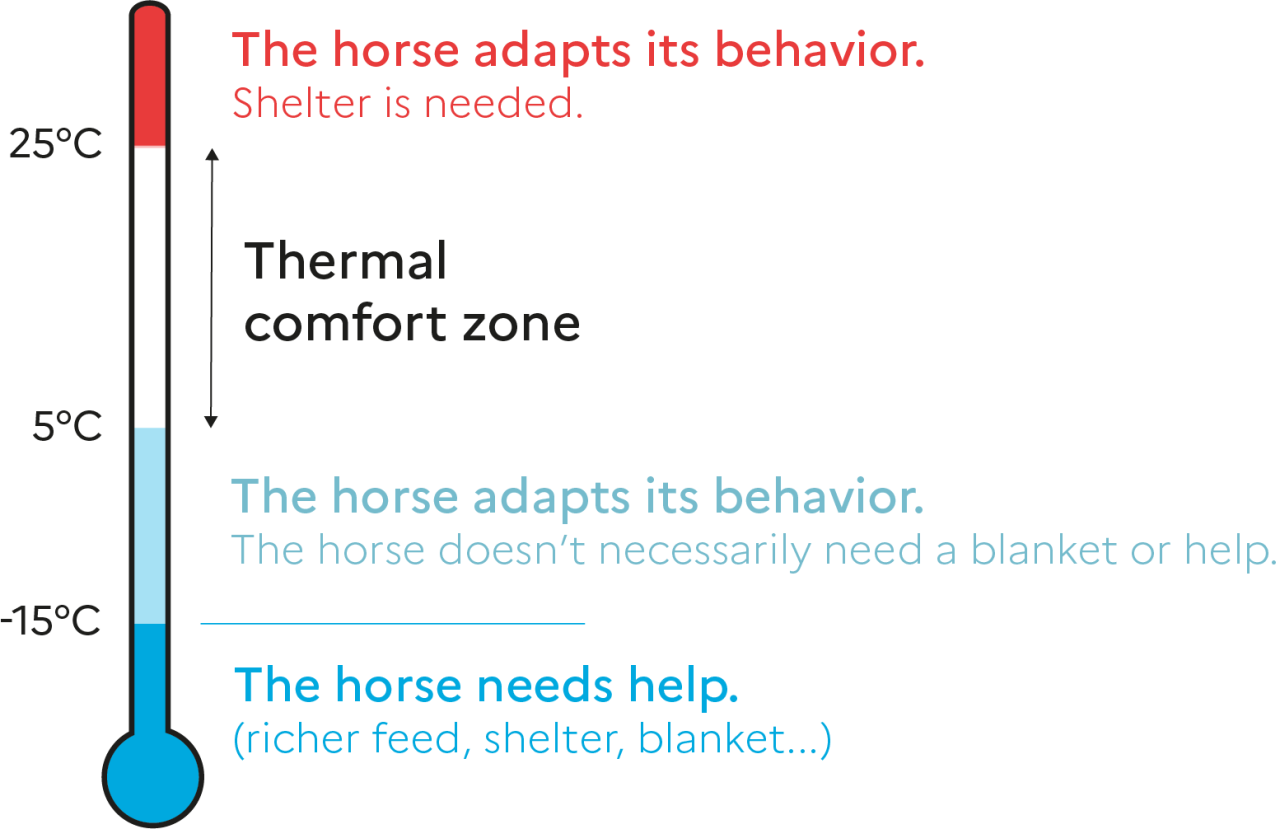
Below 5°C, the horse’s body must produce heat, notably through movement, in order to maintain body temperature. By developing a dense coat and increasing the amount of energy they use, horses can manage cold, even down to -15°C in some cases. It is therefore not always necessary to cover them outside in winter. These figures are averages and may vary considerably depending on the animal’s [19]breed, age, state of health, coat and general activity.
Below this minimum critical temperature (-15°C), horses need help: a richer diet, shelter, a blanket for shorn or thin-coated horses, etc.
The collective shelter’s surface in the meadow is also a determining factor for horse rest: the more space, the more time horses spend lying down[20]. In particular, the lateral decubitus position (with horses lying full length on their side) is essential for true recovery and consolidation of learning.
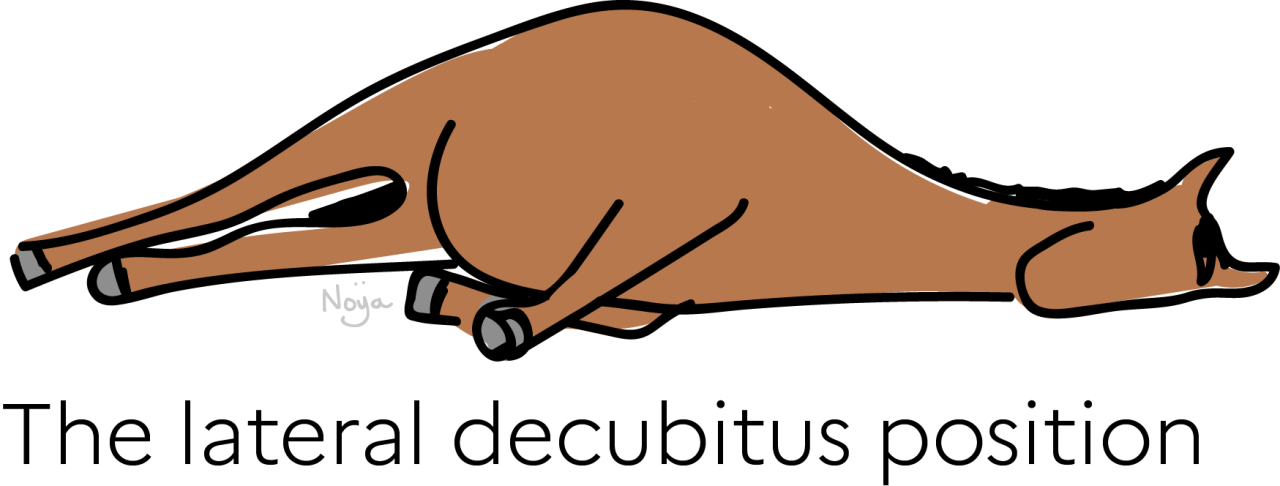
Physical and mental health
While life in the pasture has many advantages for horses, daily supervision by the owner is still needed. Outside, horses are more exposed to certain health risks:
- Internal and external parasites: as horses in the pasture and paddock are continuously contaminated with parasites present in their dung, deworming should be done in a sensible and collective manner. It should be adapted to the relevant surface area, climate and age of horses. In addition to parasite monitoring, veterinarians can also give advice on pasture management (paddock rotation, dung collection, etc.).
As we have already seen, horses are highly sensitive to the presence of insects: traps can therefore be installed in the pasture, and the most sensitive horses should be fitted with insect masks or blankets.
- Skin damage: horses, especially those with unpigmented (pink) skin, can also get sunburnt.
In wet weather, the skin around the pastern (above the hoof), in particular, can also be affected: if continually damp and/or covered in mud, it can become a breeding ground for bacteria, particularly in the unpigmented areas known as socks. This is known as pododermatitis or, more commonly, mud fever.
It is a good idea to check that the meadow is free of elements that could be a source of injury (wire mesh, pieces of scrap metal, electric wires or broken fence posts, barbed wire, etc.).
- Toxic plants: many of them can be fatal if ingested in small doses, either repeatedly or only once. Jacobaea vulgaris, for example, induces hepatitis.
Certain photosensitizing plants, when ingested, cause direct or indirect lesions on non-pigmented parts of the skin.
- Diseases transmitted by wild and domestic animals: game and insects, particularly mosquitoes and ticks, can be vectors of various diseases. To avoid contact with wild animals as much as possible, fencing must be adapted.
Domestic animals can also transmit diseases to horses indirectly, as in the case of lawsoniosis in foals, transmitted by dogs or mini-pigs.

As with any kind of change, changes in the living environment must be gradual and benefits are not immediate some horses subjected to a sudden switch from stall housing to group pasture (and vice versa!) have difficulty adapting to their new environment, particularly in the first few days. Twenty or so days of grazing seem to be necessary to observe observe beneficial effects on the welfare of horses3. Finally, when permanent pasture is not possible, the alternative of leaving the horses in the pasture for part of the day and then bringing them in for the remaining hours has been shown to have a positive impact on the welfare of horses compared with mainly individual stalls[22].
If in doubt, call a vet!
In short
Article written in partnership with Isabelle Desjardins-Pessonveterinarian and teacher at VetAgro Sup’s Clinéquine, specialist in equine internal medicine and intensive care Alice Ruet“Equine welfare” research and development engineer at Ifce, member of the INRAe / CNRS / Université de Tours / IFCE “Cognition Ethologie Bien-être animal” joint research unit.
[1] Hartmann, E., Søndergaard, E. & Keeling, L. J. Keeping horses in groups: A review. Appl. Anim. Behav. Sci. 136, 77–87 (2012). https://doi.org/10.1016/j.applanim.2011.10.004
Löckener, S., Reese, S., Erhard, M. & Wöhr, A.-C. Pasturing in herds after housing in horseboxes induces a positive cognitive bias in horses. J. Vet. Behav. 11, 50–55 (2016). http://dx.doi.org/10.1016/j.jveb.2015.11.005
Ruet, A. et al. Effects of a temporary period on pasture on the welfare state of horses housed in individual boxes. Appl. Anim. Behav. Sci. 228, 105027 (2020). https://doi.org/10.1016/j.applanim.2020.105027
Yarnell, K., Hall, C., Royle, C. & Walker, S. L. Domesticated horses differ in their behavioural and physiological responses to isolated and group housing. Physiol. Behav. 143, 51–57 (2015). https://doi.org/10.1016/j.physbeh.2015.02.040
[2] Löckener et al., 2016. For an overview of the study see https://sciencesequines.fr/resume-lockener-2016/
[3] Duncan, P. Time-Budgets of Camargue Horses Ii. Time-Budgets of Adult Horses and Weaned Sub-Adults. Behaviour72, 26–48 (1980). http://dx.doi.org/10.1163/156853980X00023
Boyd, L. E. Time budgets of adult Przewalski horses: Effects of sex, reproductive status and enclosure. Appl. Anim. Behav. Sci. 21, 19–39 (1988). https://doi.org/10.1016/0168-1591(88)90099-8
Boyd, L. E., Carbonaro, D. A. & Houpt, K. A. The 24-hour time budget of Przewalski horses. Appl. Anim. Behav. Sci.21, 5–17 (1988). https://doi.org/10.1016/0168-1591(88)90098-6
Kaseda, Y. Seasonal Changes in Time Spent Grazing and Resting of Misaki Horses. Jpn. J. Zootech. Sci., 464–469 (1983). https://doi.org/10.2508/chikusan.54.464
Kiley-Worthington, M. Time-budgets and social interactions in horses: The effect of different environments. Appl. Anim. Behav. Sci. 13, 181–182 (1984).
[4] Hampson, B. et al. Monitoring distances travelled by horses using GPS tracking collars. Aust. Vet. J. 88, 176–181 (2010). https://doi.org/10.1111/j.1751-0813.2010.00564.x
[5] Hampson, B. et al., 2010.
Hampson, B. A., de Laat, M. A., Mills, P. C. & Pollitt, C. C. Distances travelled by feral horses in ‘outback’ Australia. Equine Vet. J. Suppl. 582–586 (2010). https://doi.org/10.1111/j.2042-3306.2010.00203.x
[6] Lee, J., Floyd, T., Erb, H. & Houpt, K. Preference and demand for exercise in stabled horses. Appl. Anim. Behav. Sci.130, 91–100 (2011). http://dx.doi.org/10.1016/j.applanim.2011.01.001
[7] Yarnell et al., 2015.
[8] Mills, D. S. & McDonnell, S. M. The Domestic Horse The Origins, Development and Management of its Behaviour. (2005).
[9] Mills & McDonnell, 2005.
[10] Salter, R. E. & Hudson, R. J. Social organization of feral horses in western Canada. Appl. Anim. Ethol. 8, 207–223 (1982).
Warring, G. Horse Behaviour. (2003).
[11] Mendonça, R. S. et al. Social determinants of affiliation and cohesion in a population of feral horses. Appl. Anim. Behav. Sci. 245, 105496 (2021). https://doi.org/10.1016/j.applanim.2021.105496
[12] Ingólfsdóttir, H. & Sigurjónsdóttir, H. The benefits of high rank in the wintertime—A study of the Icelandic horse. Appl. Anim. Behav. Sci. – APPL ANIM BEHAV SCI 114, 485–491 (2008). http://dx.doi.org/10.1016/j.applanim.2008.04.014
[13] Bourjade, M., Thierry, B., Hausberger, M. & Petit, O. Is Leadership a Reliable Concept in Animals? An Empirical Study in the Horse. PLoS ONE 10, e0126344 (2015). https://doi.org/10.1371/journal.pone.0126344
See also: https://onlinelibrary.wiley.com/doi/pdf/10.1111/eth.12402
[14] Hartmann et al., 2012
Warring, G. Horse Behaviour. (2003)
Freymond, S., Briefer, E., Niederhäusern, R. & Bachmann, I. Pattern of Social Interactions after Group Integration: A Possibility to Keep Stallions in Group. PloS One 8, e54688 (2013). https://doi.org/10.1371/journal.pone.0054688
[15] Christensen, J. W. et al. Insect-repelling behaviour in horses in relation to insect prevalence and access to shelters. Appl. Anim. Behav. Sci. 247, 105560 (2022). https://doi.org/10.1016/j.applanim.2022.105560
[16] Proops, L. et al. Shelter-seeking behavior of donkeys and horses in a temperate climate. J. Vet. Behav. 32, 16–23 (2019). https://doi.org/10.1016/j.jveb.2019.03.008
[17] Proops, L. et al., 2019
[18] Morgan, K. Thermoneutral zone and critical tempratures of horses. J Therm Biol 23, 59–61 (1998). https://doi.org/10.1016/S0306-4565(97)00047-8
[19] Mejdell, C. M., Buvik, T., Jørgensen, G. H. M. & Bøe, K. E. Horses can learn to use symbols to communicate their preferences. Appl. Anim. Behav. Sci. 184, 66–73 (2016). https://psycnet.apa.org/doi/10.1016/j.applanim.2016.07.014
[20] Kjellberg, L., Yngvesson, J., Sassner, H. & Morgan, K. Horses’ Use of Lying Halls and Time Budget in Relation to Available Lying Area. Anim. Open Access J. MDPI 11, 3214 (2021). https://doi.org/10.3390/ani11113214
[21] Kjellberg, L., Sassner, H. & Yngvesson, J. Horses’ resting behaviour in shelters of varying size compared with single boxes. Appl. Anim. Behav. Sci. 254, 105715 (2022). https://doi.org/10.1016/j.applanim.2022.105715
[22] Lansade, L. et al. Behavioral and Transcriptomic Fingerprints of an Enriched Environment in Horses (Equus caballus). PLOS ONE 9, e114384 (2014). https://doi.org/10.1371/journal.pone.0114384
Keep in mind
Meadow life fosters horses’ welfare if it is organized in such a way that they can:
- Eat frequently and have clean water available throughout the day
- Move freely
- Be protected in all weather conditions
- Be healthy
- Live in a group, which needs to be stable to create strong, lasting bonds
Key Figure
This is the number of hours a horse spends feeding under natural conditions.

